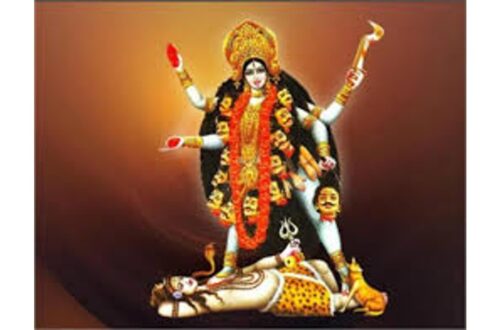Introduction
The Aum Namah Shivaya Mantra is a timeless chant that holds a place of deep reverence and power in Hindu spirituality. This sacred mantra is a beacon for those seeking peace, inner strength, and a profound connection with the divine. By delving into the essence of this mantra, we can uncover its rich history, profound meanings, and transformative benefits.
Historical Background
The roots of the Aum Namah Shivaya Mantra trace back to ancient Vedic texts, where it is celebrated as one of the most potent invocations. It is predominantly associated with Lord Shiva, one of the principal deities of Hinduism, revered as the destroyer and transformer within the Trimurti. This mantra is deeply embedded in the Shaivism tradition, which sees Shiva as the supreme being.
Spiritual Significance
At its core, Aum Namah Shivaya is a declaration of reverence and adoration towards Shiva, symbolizing the eternal rhythm of the universe. Each syllable holds a unique vibration and meaning that together fosters a state of spiritual harmony. The mantra invites the practitioner to a state of humility, surrender, and connection with higher consciousness.
Pronunciation and Structure
To fully appreciate the power of Aum Namah Shivaya, understanding its pronunciation and structure is essential. The mantra is typically broken down into five syllables, each representing a fundamental element of the universe:
- Aum: The primordial sound
- Na: Earth
- Mah: Water
- Shi: Fire
- Va: Air
- Ya: Ether
Each of these elements corresponds to a part of the body and the universe, creating a holistic resonance during chanting.
Aum: The Primordial Sound
Aum (or Om) is considered the most sacred sound in Hinduism, often seen as the seed of all other mantras. It represents the essence of the ultimate reality, encompassing creation, preservation, and destruction. Chanting Aum helps align the practitioner’s mind with the cosmic vibration, fostering a sense of unity with the universe.
Namah: Offering and Surrender
Namah means “to bow” or “to offer,” signifying an act of surrender and devotion. In the context of Aum Namah Shivaya, it represents humility and reverence towards the divine force, acknowledging its supreme power and presence in our lives.
Shivaya: The Divine Consciousness
Shivaya directly relates to Shiva, the embodiment of pure consciousness and bliss. Chanting this part of the mantra invokes Shiva’s energy, guiding the practitioner toward spiritual enlightenment and liberation from the cycle of birth and death.
Benefits of Chanting
Chanting the Aum Namah Shivaya Mantra offers a multitude of benefits that touch every aspect of our being. These benefits can be categorized into physical, mental, and spiritual enhancements, each contributing to a holistic sense of well-being.
Physical Health Benefits
The vibrations produced by chanting Aum Namah Shivaya can have a healing effect on the body. Regular practice can help in reducing stress, lowering blood pressure, and enhancing the immune system. The mantra’s rhythmic nature also promotes deep breathing, which oxygenates the blood and improves overall physical health.
Mental Health Benefits
On a mental level, chanting this mantra aids in calming the mind, reducing anxiety, and enhancing concentration. The repetitive nature of the chant helps quiet the constant chatter of the mind, promoting a state of inner peace and clarity. Many practitioners report an increased sense of focus and emotional stability as a result of regular practice.
Spiritual Benefits
Spiritually, Aum Namah Shivaya acts as a bridge connecting the practitioner with the divine. It helps in cultivating a sense of humility, surrender, and devotion, fostering a deeper connection with the higher self. Regular chanting can lead to profound spiritual experiences and a heightened sense of awareness and inner bliss.
Daily Practice
Integrating the Aum Namah Shivaya Mantra into daily life can significantly enhance its benefits. Whether it’s through morning meditation or during moments of quiet reflection, this mantra can be a powerful tool for spiritual growth and self-discovery.
Best Times to Chant
While the Aum Namah Shivaya Mantra can be chanted at any time, there are certain periods considered more auspicious. Early morning hours, particularly during Brahma Muhurta (around 4:00 AM), and dusk are ideal times for chanting. These times are believed to have a high level of spiritual energy, making the practice more effective.
How to Chant
Chanting Aum Namah Shivaya can be done in various ways, each with its unique benefits. The mantra can be chanted silently, aloud, or as part of a group. Each method has its own set of advantages, allowing practitioners to choose the one that resonates most with them.
Silent Chanting
Silent chanting, or japa, involves repeating the mantra internally. This method allows for a deep, personal connection with the mantra, fostering a state of inner tranquility and meditation. Silent chanting is particularly effective for those seeking to deepen their meditation practice and enhance their focus.
Vocal Chanting
Vocal chanting involves reciting the mantra out loud. This practice not only helps in verbalizing the sacred sounds but also in feeling the vibrations in the body. Vocal chanting can be a powerful way to release pent-up emotions and stress, making it an excellent practice for emotional healing.
Group Chanting
Group chanting, or kirtan involves chanting the mantra collectively with others. The combined energy of multiple voices can create a powerful spiritual atmosphere, enhancing the benefits of the practice. Group chanting also fosters a sense of community and shared spiritual experience, making it a joyous and uplifting practice.
Personal Stories
Many devotees have shared their transformative experiences with the Aum Namah Shivaya Mantra. From overcoming personal challenges to achieving profound spiritual insights, these stories highlight the mantra’s power to bring about positive change and healing.
Scientific Perspectives
Recent scientific studies have begun to explore the effects of mantra meditation on the brain and body. Research indicates that regular chanting can lead to significant improvements in mental health, including reduced anxiety and depression, as well as enhanced cognitive function. These findings provide a scientific basis for the ancient practice of mantra meditation.
Aum Namah Shivaya in Modern Life
In today’s fast-paced world, the Aum Namah Shivaya Mantra remains as relevant as ever. It offers a sanctuary of peace and spiritual solace amidst the chaos of modern life. By incorporating this mantra into daily routines, individuals can find balance, inner strength, and a deeper sense of purpose.
Common Misconceptions
Despite its widespread popularity, there are several misconceptions about the Aum Namah Shivaya Mantra. Some people believe that it is only meant for certain religious groups or that it requires special initiation. However, the mantra is universal and can be practiced by anyone, regardless of their background or beliefs.
Incorporating in Yoga
The Aum Namah Shivaya Mantra can greatly enhance a yoga practice. Chanting the mantra before or after yoga sessions can deepen the meditative state, align the chakras, and promote a sense of unity between the body, mind, and spirit. It is a powerful way to integrate spirituality into physical practice.
Aum Namah Shivaya in Music
The mantra has found its place in various forms of music, from traditional bhajans to contemporary spiritual songs. Its soothing and uplifting vibrations make it a popular choice for artists seeking to infuse their music with spiritual energy. Listening to or singing these musical renditions can be a beautiful way to connect with the mantra.
Famous Personalities
Many notable figures, including spiritual leaders, artists, and celebrities, have embraced the Aum Namah Shivaya Mantra. Their stories and experiences can inspire others to explore the mantra and its potential for personal transformation and spiritual growth.
Learning Resources
For those interested in delving deeper into the Aum Namah Shivaya Mantra, numerous resources are available. Books, online courses, and workshops offer comprehensive guidance on the mantra’s history, significance, and practical application. These resources can provide valuable insights and support for practitioners at all levels.
Children and Mantra
Introducing children to the Aum Namah Shivaya Mantra can be a wonderful way to cultivate mindfulness and spiritual awareness from a young age. Simple chanting sessions can help children develop concentration, emotional balance, and a sense of inner peace.
Aum Namah Shivaya Mantra Explained
The Aum Namah Shivaya Mantra is a profound spiritual tool with numerous benefits. Its simplicity and depth make it accessible to anyone seeking to enhance their spiritual journey. Understanding and embracing this mantra can unlock its full potential and experience its transformative power.
FAQs
What does Aum Namah Shivaya mean? The mantra translates to “I bow to Shiva,” acknowledging the divine consciousness within and around us.
How often should I chant Aum Namah Shivaya? There is no strict rule, but regular practice, such as daily chanting, can yield the best results.
Can anyone chant Aum Namah Shivaya? Yes, the mantra is universal and can be chanted by anyone, regardless of their background or beliefs.
What are the benefits of chanting Aum Namah Shivaya? The benefits include physical healing, mental clarity, and spiritual growth.
Is there a specific way to chant the mantra? The mantra can be chanted silently, aloud, or in a group, each method offering unique benefits.
Can children chant Aum Namah Shivaya? Yes, children can benefit from the mantra, especially in developing mindfulness and emotional balance.
Conclusion
The Aum Namah Shivaya Mantra is a timeless spiritual practice that offers a pathway to peace, healing, and enlightenment. Its profound significance and versatile application make it a valuable tool for anyone seeking to enhance their spiritual journey. Embrace this mantra, and let it guide you towards a deeper connection with the divine and a more harmonious life.






